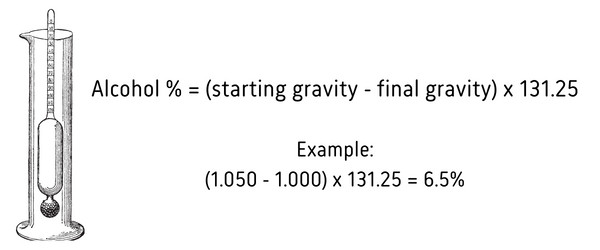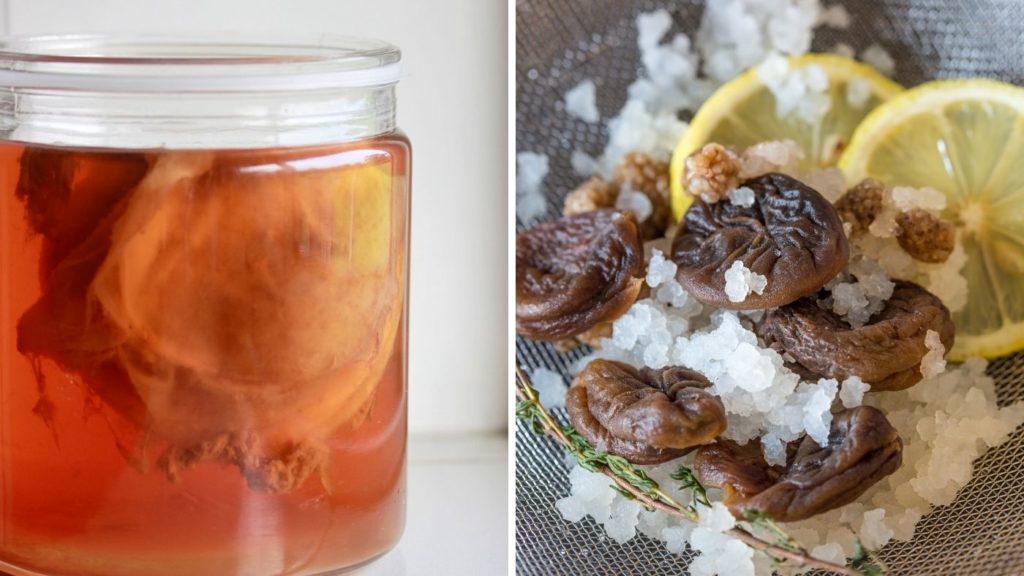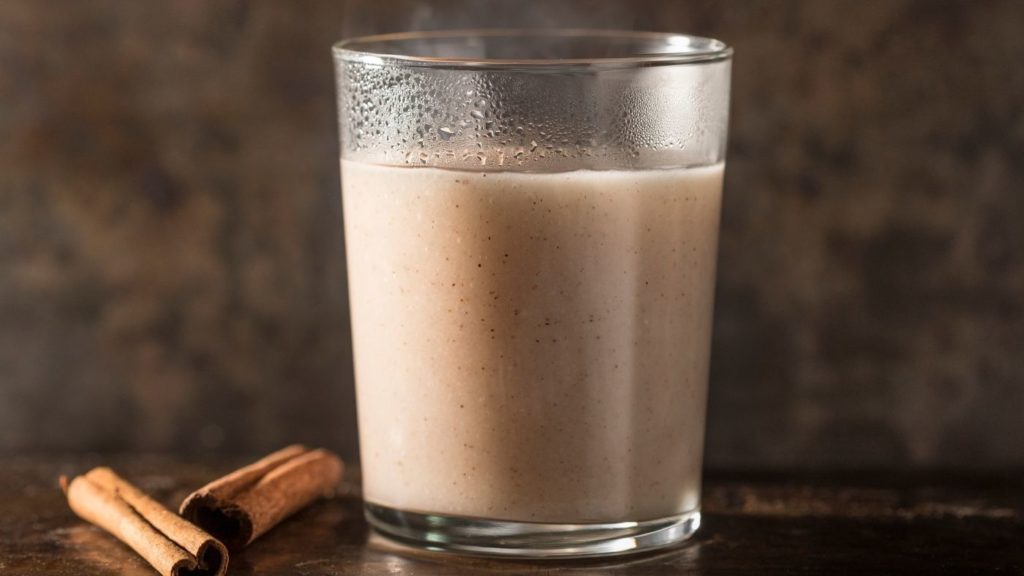Learn how to easily turn rhubarb into delicious fruity wine!
Rhubarb is particularly well suited to homemade fruit wines. Rhubarb wine offers a nice acidity on the palate as well as lemony, floral notes.
Many homemade wine lovers like to combine rhubarb with other fruit, but in this case, rhubarb is allowed to shine on its own!
Making homemade rhubarb wine is very simple. You just need to start with a few ingredients, be properly equipped, and sanitize well.
In this recipe, we will give you all the information you need to turn rhubarb stalks into a delicious wine that can be enjoyed in summer as well as on cold winter evenings.
If you follow the instructions and quantities carefully, you will obtain a dry, slightly sparkling wine with an alcohol content of about 10%.
Ingredients for Making Rhubarb Wine
Rhubarb
The peak harvest season for rhubarb lasts two to three months. In France, it is found mainly in May and June, and in Canada, in June and July.
However, you can also use frozen rhubarb for this recipe. You can make rhubarb wine at any time of the year.
You can keep or remove the skin of the rhubarb.
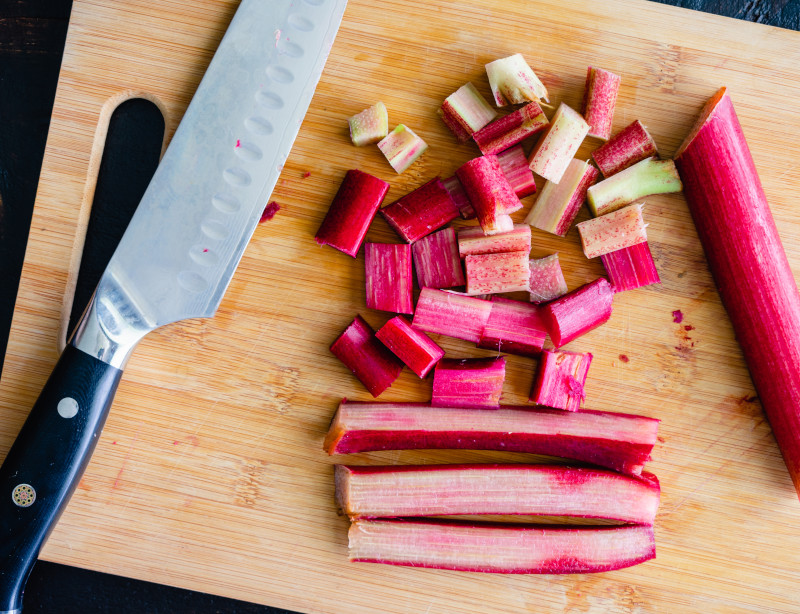
Sugar
Unlike other fruit used to make wine, rhubarb does not contain much sugar. Sugar must be added to feed the yeast and create the alcohol.
White sugar works very well. You can also use cane sugar or other natural sugars, but not artificial sugars like erythritol.
It is primarily the amount of sugar that will influence the amount of alcohol in the resulting wine.
Water
Water is the most important ingredient in terms of volume in rhubarb wine.
Use filtered water, if possible.
Yeast
Many rhubarb wine recipes use wild yeast to turn sugar into alcohol. However, to avoid unpleasant surprises, we recommend using wine yeast.
For this recipe, we have chosen Lalvin K1-V1116 yeast, which brings fruity and delicate flavours to the rhubarb wine. EC-1118 and D-47 are two other good options.
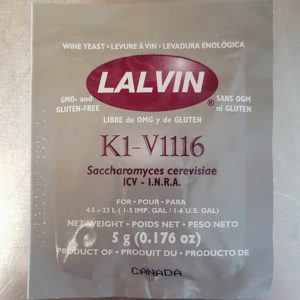
Yeast Feed
Unlike grapes, rhubarb does not contain the nutrients necessary for yeast to work. Therefore, nutrients must be added to stimulate fermentation!
We recommend using yeast nutrient, which contains all the nutrients, minerals, and nitrogen necessary for healthy yeast.
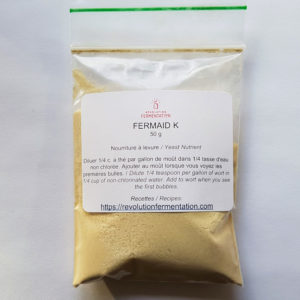
Tannins (Tea)
Tannins give astringency to wine and an interesting taste in the mouth. Grapes contain a lot of tannin, but rhubarb does not! You can therefore infuse black tea into the wort… or not! It’s up to you.
Equipment for Making Rhubarb Wine
Being well-equipped is a guarantee of success in making homemade rhubarb wine.
Here is the recommended equipment:
- Fermentation jar
- Nylon straining bag (or fine sieve)
- 1 gallon fermenter carboy
- Funnel
- Pressure resistant bottles
- Sanitizer
- Auto siphon (or a hose to make a siphon)
- Hydrometer (optional)
Have a look at our hard cider making kit for a good starting point.
Steps for making rhubarb wine
Making rhubarb wine can be summarized in these five steps.
1. Make a Rhubarb Syrup
The first step is to extract the rhubarb’s flavours into a syrup. To do this, the rhubarb is covered with sugar and left to macerate.
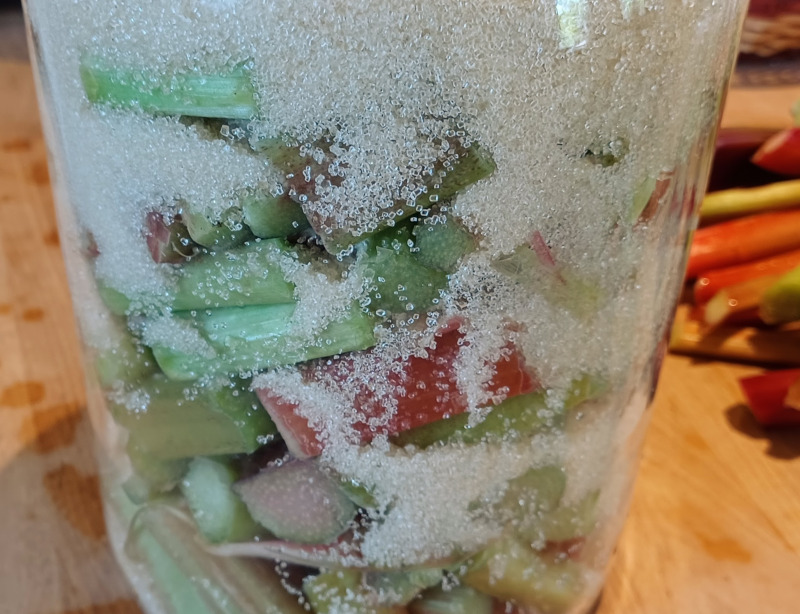
The sugar draws the water out of the rhubarb and creates a concentrated syrup. The syrup is then filtered, pasteurized, and diluted.
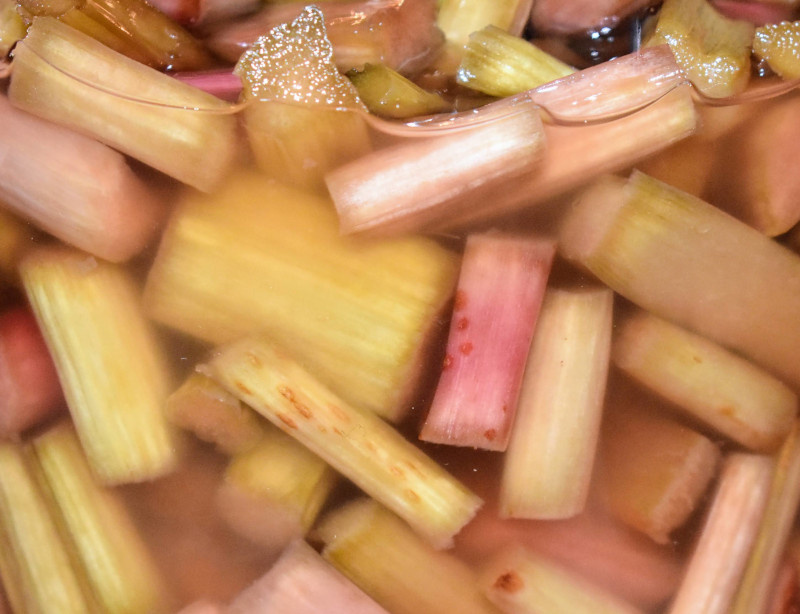
2. Sanitizing the Equipment
Cleanliness and sanitation of equipment are essential when making wine. It’s easier than you think! Here we use Star San sanitizer, which does not require rinsing.
3. Preparing the Wort
The wort is the sweet liquid that the yeast will turn into wine. Two ingredients are added to the syrup to help the fermentation process: tea (for a balanced taste of tannins) and yeast nutrient.
4. Let It Ferment
Fermenting wine can take several weeks or even months.
The first week is often very intense! The fermentation then settles down. When no more bubbles appear in the airlock, you are ready for the next step.
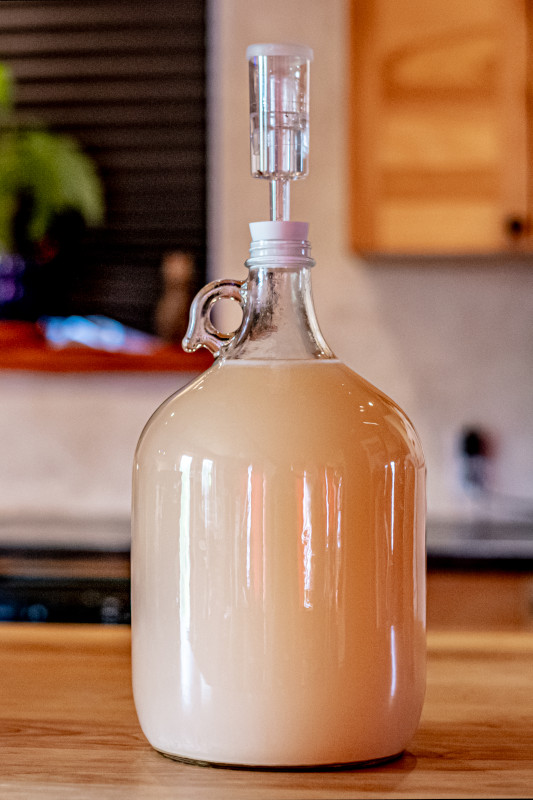
5. Bottling
The rhubarb wine is transferred to the bottles, using an auto siphon. The rhubarb wine is then left to age in the bottle.
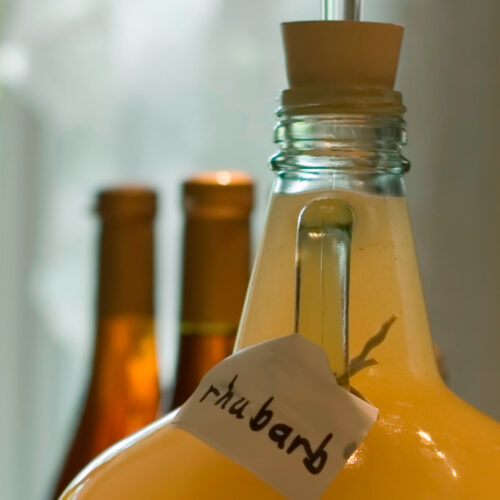
Rhubarb Wine Recipe (1 gallon)
Equipment
- 1 Knife
- 1 Spoon
- 1 large saucepan
- 1 hydrometer optional
- 1 Funnel
- 5 swing top glass bottles 750 ml
Ingredients
Sanitation
- 1 tsp. Star San sanitizer
- water
Rhubarb syrup
- 3.3 lbs rhubarb
- 2.2 lbs sugar
Wort
- 1 sachet K1 yeast
- ¼ tsp. Fermaid yeast nutrient
- 2 bags plain black tea optional
- 1 gal filtred water
Steps
Making Rhubarb Syrup
- Wash the rhubarb and remove any damaged parts.
- Cut the rhubarb into 1 inch pieces.
- Fill the jar with the rhubarb pieces.
- Add the white sugar.
- Close the lid of the jar.
- Let the syrup macerate. Stir at least once a day to ensure that the sugar dissolves.
- After 3 to 7 days, separate the syrup from the rhubarb with the nylon filter. Pour the syrup into a large saucepan.
- Place the rhubarb pieces back in the jar and cover with 8 cups of water. Stir to extract as much syrup as possible.
- Strain again while pouring into the saucepan.
- Heat the syrup over medium-high heat, then remove from heat as soon as it starts to boil.
- Add the black tea to the syrup. Let it infuse for about 10 minutes, then remove the tea bags.
- Use the rhubarb pieces to make jam, pie, or muffins. No waste! 😁
Sanitizing the Equipment
- Add the sanitizer to the carboy.
- Fill the carboy with cold water up to the brim.
- Leave for at least 2 minutes.
- During this time, clean and rinse your sink, then secure the plug.
- Pour the contents of the carboy into the sink.
- Soak the equipment you are about to use, pierced lid, auto siphon, funnel, hydrometer, small bowl, spoon, and airlock.
- Allow the product to work for at least 2 minutes.
- Empty the water and let the equipment drain without rinsing.
Preparation of the Wort
- In a small bowl, dissolve the yeast in ¼ cup of warm water. Stir gently with a sanitized spoon and let it sit.
- Feel the saucepan that contains the rhubarb syrup. If the edges of the saucepan are too hot to touch, wait. The goal is to be below 105°F (40°C).
- Add the yeast and yeast nutrient to the saucepan. Mix well with the spoon.
- Pour the liquid into the carboy with the funnel.
- Top up with water until 2 inches (5 cm) from the rim.
- Dip the hydrometer into the carboy. Note the result, which should be around 1.075. If it is higher or lower, the final alcohol level will change.
- Put the pierced lid on the carboy. Push the auto siphon tube into the hole. Place the other end of the tube in a glass filled with water.
Fermenting the Rhubarb Wine
- Ferment for 5 days at room temperature, out of direct sunlight. The fermentation will be very active!
- Replace the auto siphon tube with the airlock.
- Fill the airlock with water up to the line.
- Ferment for 3 more weeks (1 month total), or until there are no more bubbles in the airlock. You can also age the rhubarb wine for several months in a carboy.
Bottling
- Sanitize the bottles, auto siphon, and hydrometer.
- Measure the gravity of the rhubarb wine with the hydrometer. Note the result, which should be around 0.998. If the gravity is higher than 1.005, let it ferment for a few more weeks.
- If desired, add 1 tsp. of white sugar to each 750ml bottle to make a sparkling rhubarb wine.
- Using the auto siphon, transfer the rhubarb wine to the bottles. Fill up to 1 inch from the rim. Be careful not to draw the deposits from the bottom of the carboy with the auto siphon.
- Close the bottles and let them stand for at least 2 weeks in a cool place sheltered from light.
Notes
Calculating the Alcohol Content of Your Rhubarb Wine
It is possible to calculate the alcohol content of your wine if you have a hydrometer. Take the density before and after fermentation, to determine the amount of sugar converted into alcohol.
Here is the formula for calculating the alcohol content:
